Ilana Kaufman’s second-grade art students grade students are exploring fiber arts by learning how to weave on a loom.
Here’s the fun part: Students made their own looms by painting paper plates with decorative line details! Students are using yarn and an “under/over” repetitive pattern to create a circle weaving work of art. Each design is beautiful and unique!
Paper plate looms also give students a chance to further build fine motor skills. There are even some math connections, too, as students have to think about measuring and pattern making.


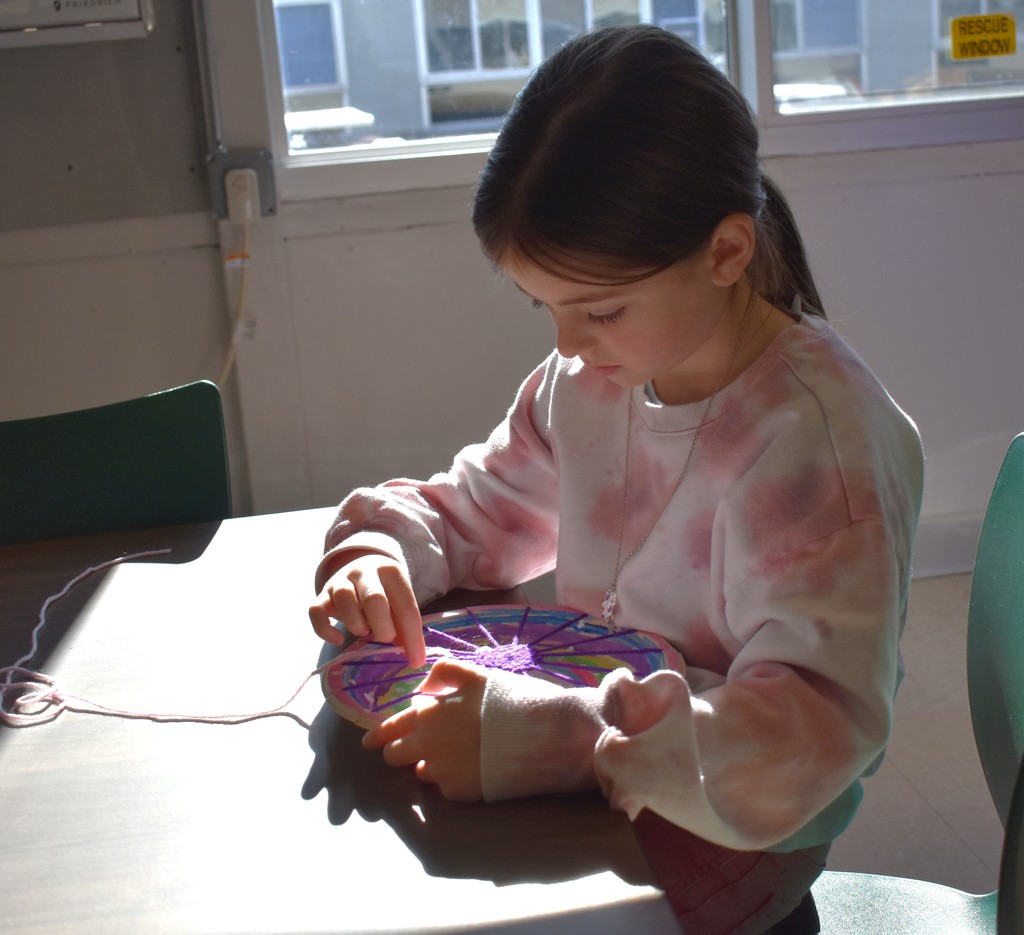
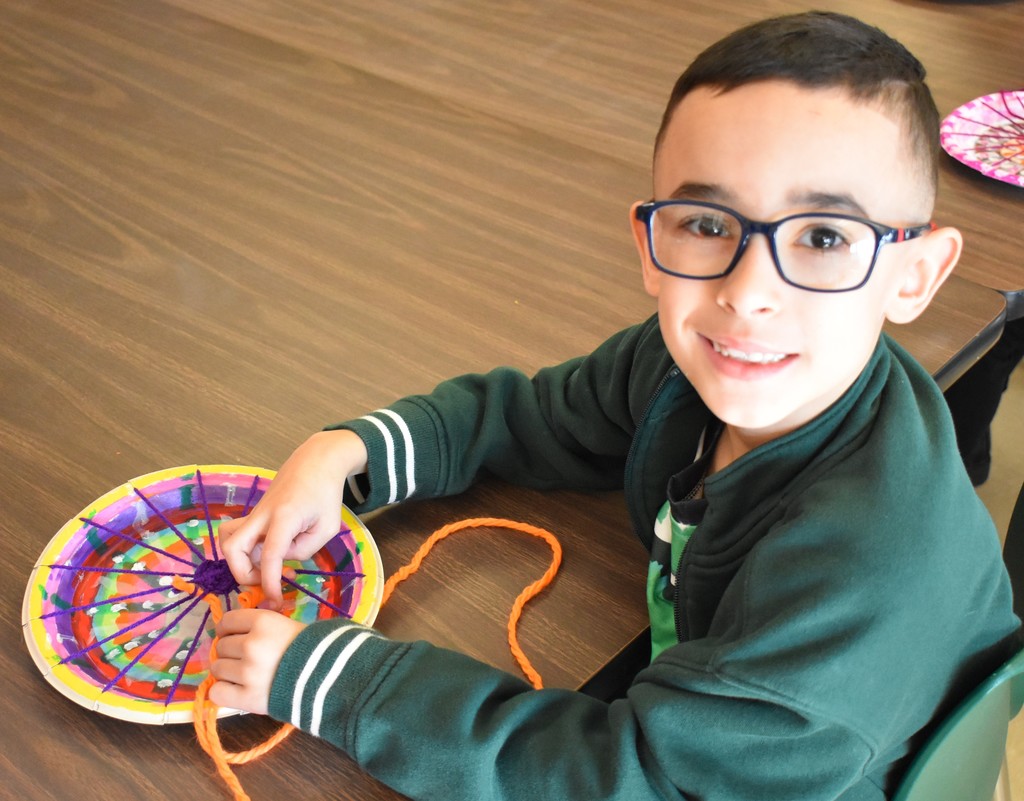


Christopher Tuthill’s High School technology classes activities sometimes expand beyond the curriculum for each class. Take a peek at Mr. Tuthill’s recent class presentations on the process of making maple syrup!
The goal of the demonstrations was to expose students to an activity that is unique to the northeastern United States and Canada while incorporating a STEM component to the lesson!
“We do cover types of lumber and tree identification in construction class and that was a part of my conversations with my students,” he said. “But there’s also a connection to science, technology, engineering and math as well throughout the syrup making process.”
Students learned about the history of maple syrup, tree identification, the process to tap maple trees, the boiling/evaporation process and more, including:
•Science: Students learned about the density of liquids, weather patterns, tree identification, parts of a tree (bark, sapwood, heartwood) biology- how a tree feeds itself to produce leaves each year (photosynthesize)
•Technology: Students learned the methods of sap collection, vacuum systems, evaporation processes and tools and machinery used, including the use of a hydrometer to understand sugar content
•Engineering: Students learned the methods of efficient sap collection and the process to make and bottle the final product
•Math: Students learned the ratios, or averages, for sap collected to final product made, sugar content percentage of both sap and finished syrup, boiling time, fuel consumption, tree diameter and circumference
It was the perfect STEM activity/lesson/demonstration for students to witness and participate in!
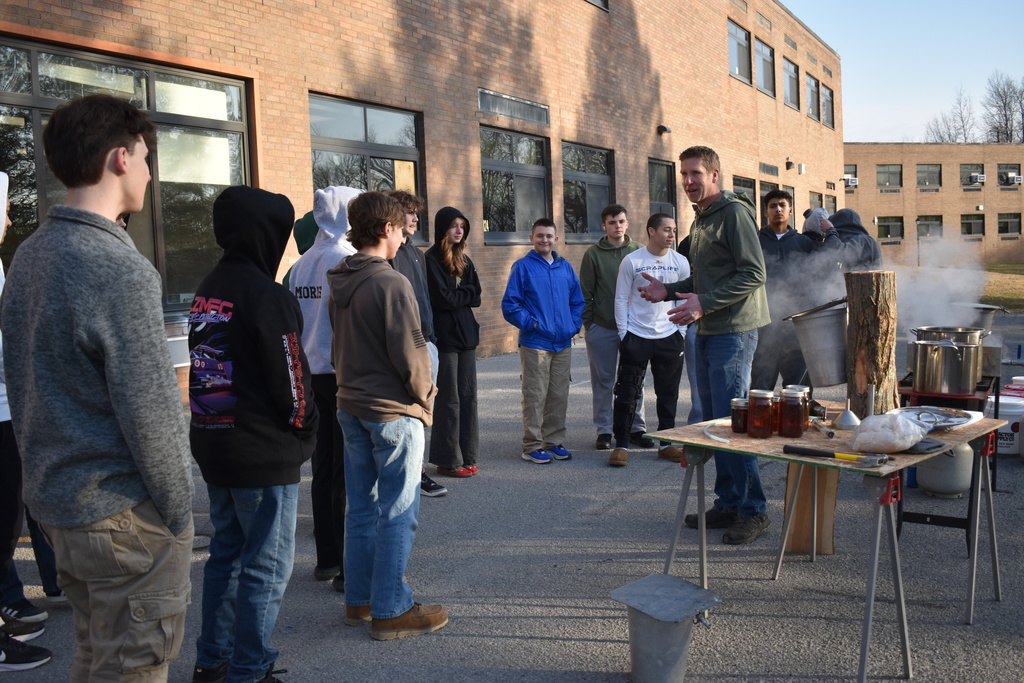


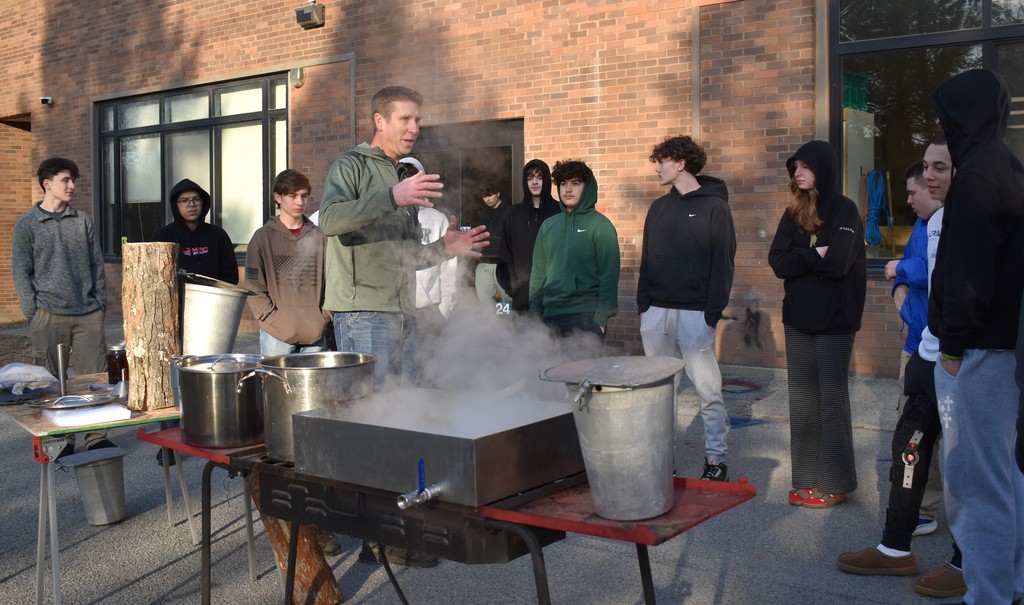
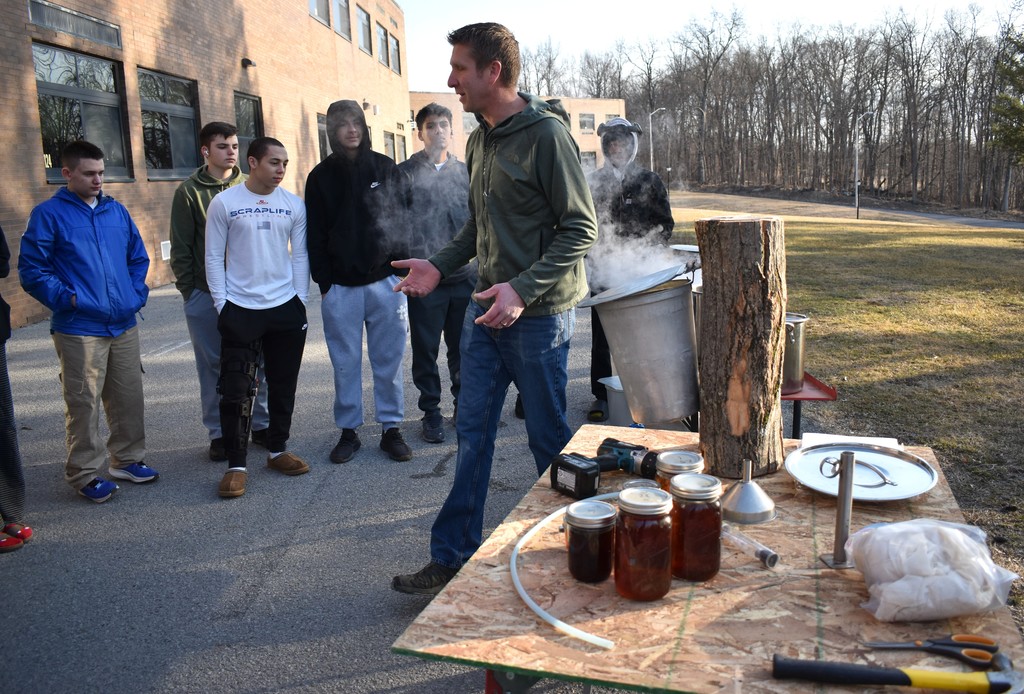
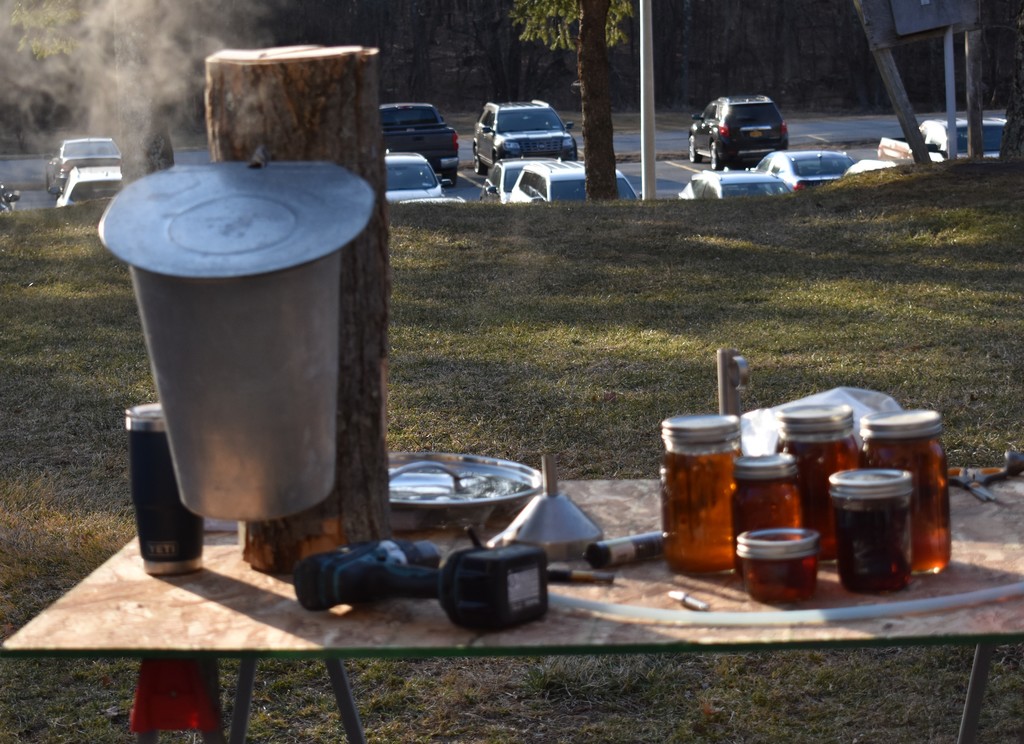
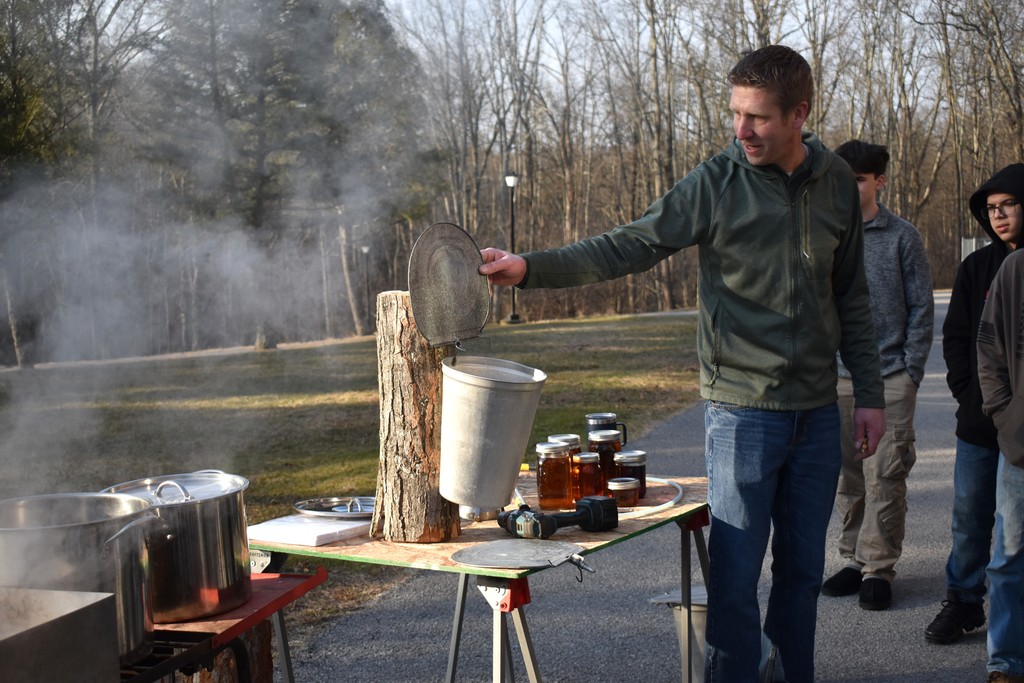
ARE YOU READY? IS YOUR BRACKET SET? MARCH MADNESS officially begins with a 6:40 p.m. tip off tonight when the St. Francis Red Flash meet Alabama State in the first of two “First Four” games.
But! Middle School Spanish classes have just completed their own MARCH MADNESS- type tournament today, March 18, with Spanish music called "Locura de Marzo!"
“Locura de Marzo” is a Spanish music tournament created by a group of Spanish teachers that takes place every March. It's similar to March Madness, but instead of college basketball teams, it's Spanish songs! This year, there are more than 215,451 students in 1,350 schools in all 50 states and 13 other countries, including the Middle School, who participated!
How it works:
•Spanish teachers around the world select 16 songs
•Each day, two songs compete against each other
•Students listen to the songs and vote for their favorite
•The winning song moves on to the next round, and the losing song is eliminated
At the Middle School, students all selected the songs that they liked in their own brackets and whoever had the most correct choices at the end of all of the rounds wins! Felicidades a los ganadores del soporte Maggie Pason y Lennox Addo!
What a great way to expose students to the Spanish language through music! Plus, “Locura de Marzo” also exposes students to new music styles and artists; helps engage students with real-world content; and helps students develop at cultural connection to different styles music!

ST. PATRICK’S DAY FUN: ROLLING FOR GOLD!
Kelly Bernice’s Otisville second-graders also had some St. Patrick’s Day-centric math fun playing several rounds of the “Rolling for Gold Math Game!”
Students rolled the dice, added the dice and then move along on the gameboard. They took turns rolling and adding. If they landed on “a Leprechaun’s hat” they had to move back several spaces on the gameboard. If they landed on a shamrock, they were able to move forward several spaces. Whoever reached the “Pot of Gold” at 100 won the game!
This fun game reinforced addition skills, promoted number sense and fluency and encouraged strategic thinking and problem-solving!






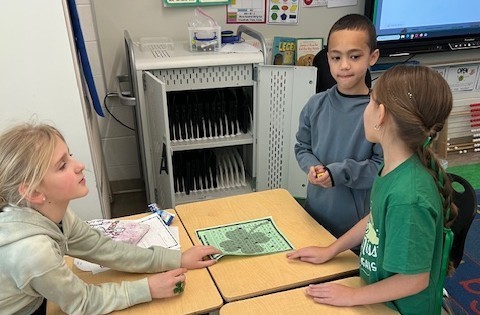
ST. PATRICK’S DAY FUN: MAGICALLY DELICIOUS MATH RATIOS!
Jacklyn Lockett’s sixth-grade math students completed some St. Patrick’s Day-centric math work focusing on ratios using Lucky Charms cereal!
Students categorized the cereal’s marshmallow bits by shape and then wrote ratios comparing the different types of marshmallow bits to other types (a part-to-part) ratio. Later then wrote “part-to-whole” ratios… and then ate the marshmallow bits!
•Part-to-part ratios demonstrate the relationship between two distinct groups or entities, allowing for comparisons and understanding of their relative proportions, which is crucial in various fields like math, statistics and real-world applications.
•Part-to-whole ratios express the relationship between a specific part and the entire whole, providing a clear understanding of proportions and facilitating comparisons, analysis, and visualization of data across various fields.







ST. PATRICK’S DAY FUN: MAGICAL MATH
Jessica Kahn’s and Julia Ferguson’s Otisville kindergarteners celebrated St. Patrick’s Day with some fun, “magical math” work!
First, students took the marshmallow bits in Lucky Charms cereal and sorted them by shapes. Then, they counted each type of marshmallow bit, took those numbers and graphed them on a bar graph. Lastly, the teachers and students discussed which marshmallow but was “the greatest and least” for each student, including if any had the same amount.
Bar graphing is important in kindergarten because it helps children develop foundational math and data skills, including counting, comparing, sorting, organizing, vocabulary and understanding basic data representation, all while making learning fun and engaging.






Cliff Loretto’s ES K-2 students are learning a fun longways dance called “Alabama Gal” in preparation for the upcoming ES Family Folk Dance March 21. Take a peek at this group --- they’re having lots of fun learning the steps of the dance so they’re fully prepared to dance with their adult partners.
All students are also learning a mixer dance and a circle dance as well as a warm-up and cool down in preparation for this upcoming big night!
•"Longways," "mixer," and "circle dances" refer to different types of folk dances that can be taught to students, often involving specific formations and movements.
•Longways dance: This dance formation involves two lines of dancers facing each other, with partners standing across from each other.
•Mixer dance: A dance where students move around and change partners, often with a call-and-response or a specific sequence of movements.
•Circle dance: A dance where students stand in a circle, semicircle, or curved line, sometimes with partners, and move together to music.





"Top of the morning" to you and Happy Saint Patrick's Day!
Meghan Donahue's ES first-graders have made some spectacular leprechaun traps with the intention of capturing any mischievous leprechauns that may have made their way into their classroom. Students will be arriving shortly, so it'll be interesting to see if any were trapped!
Leprechaun traps are craft projects usually made from household items like boxes, tin cans, or paper, and these little students made
The tradition of leprechaun trapping is similar to the Christmas tradition of leaving cookies out for Santa Claus.
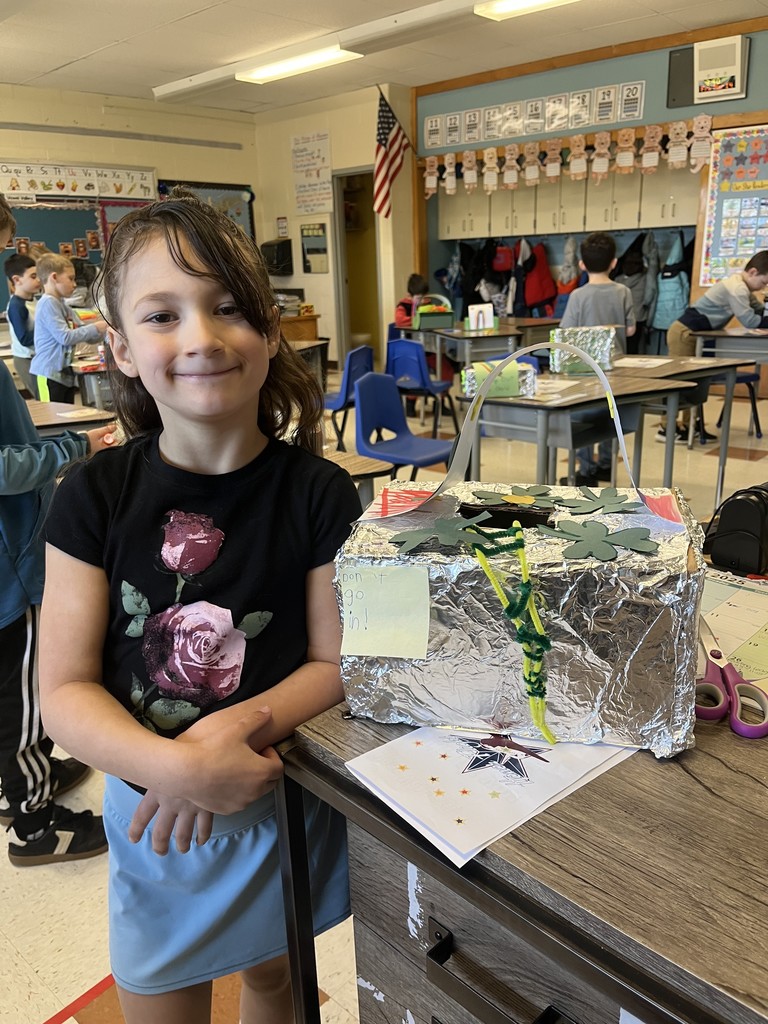

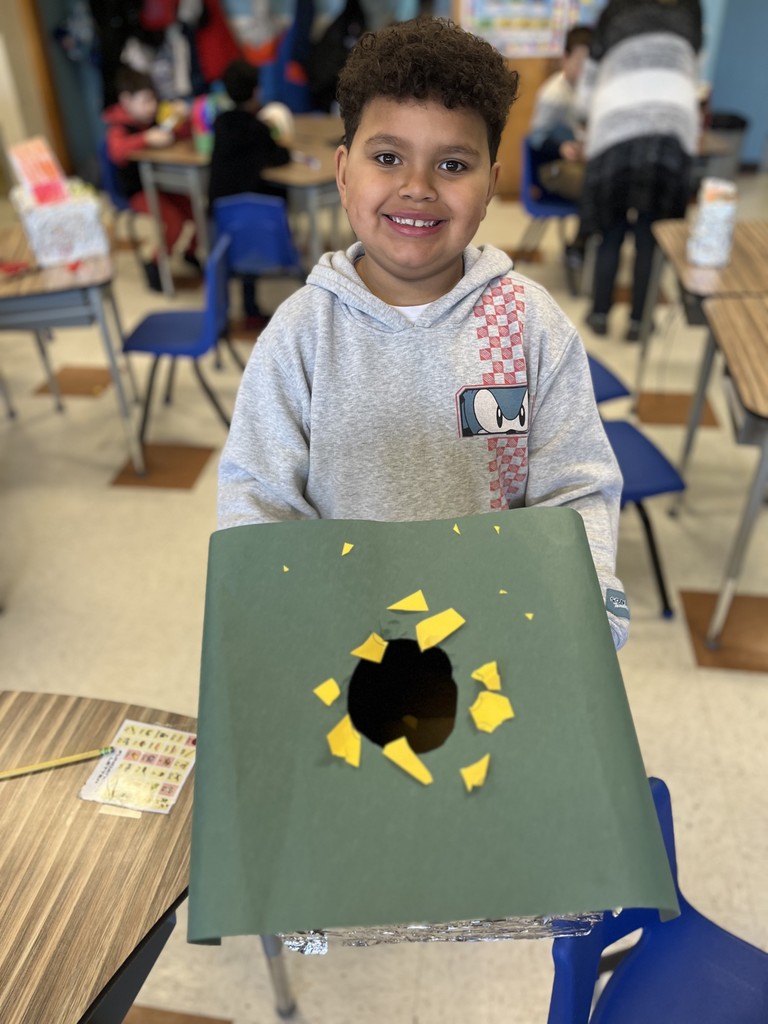

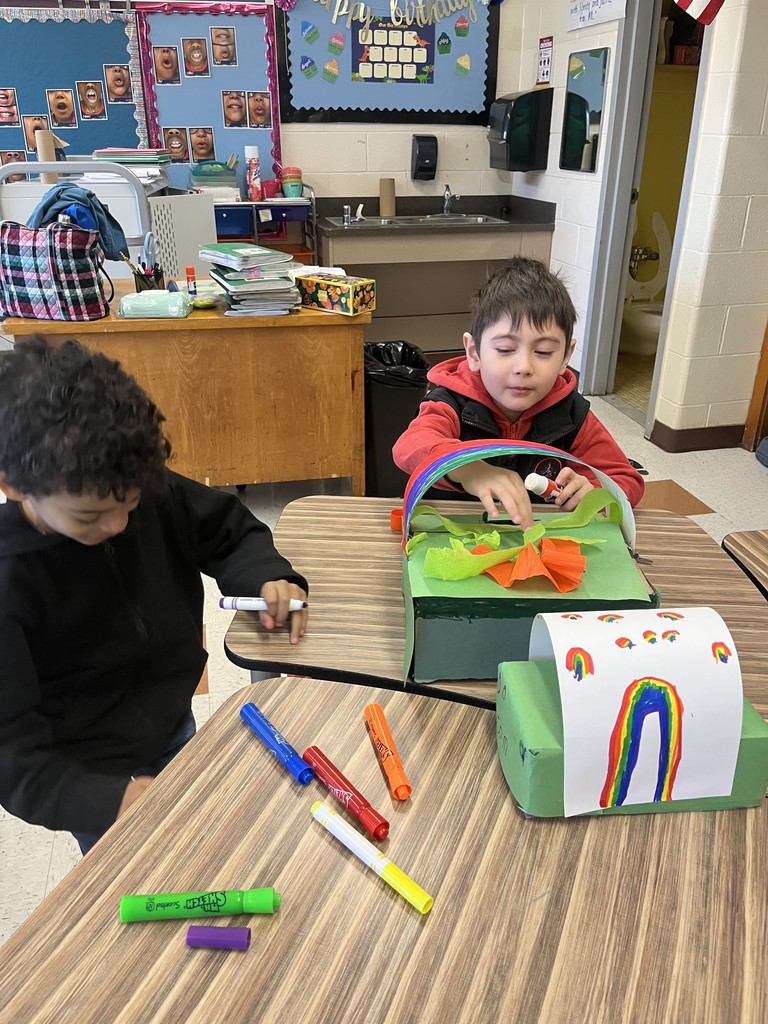
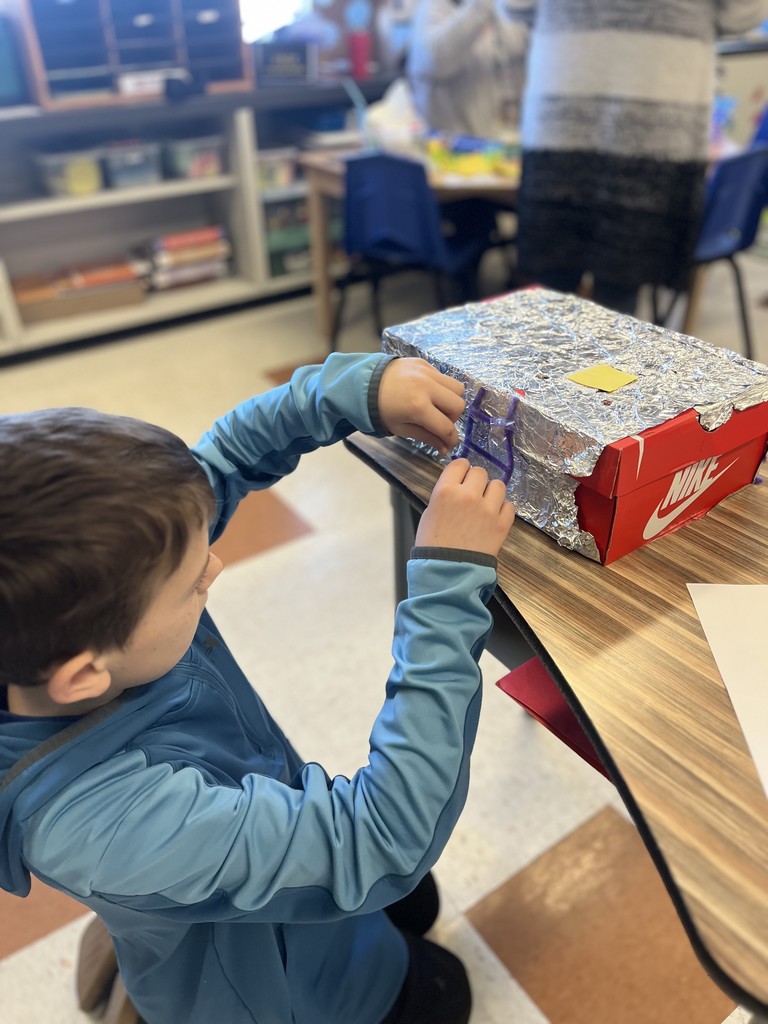
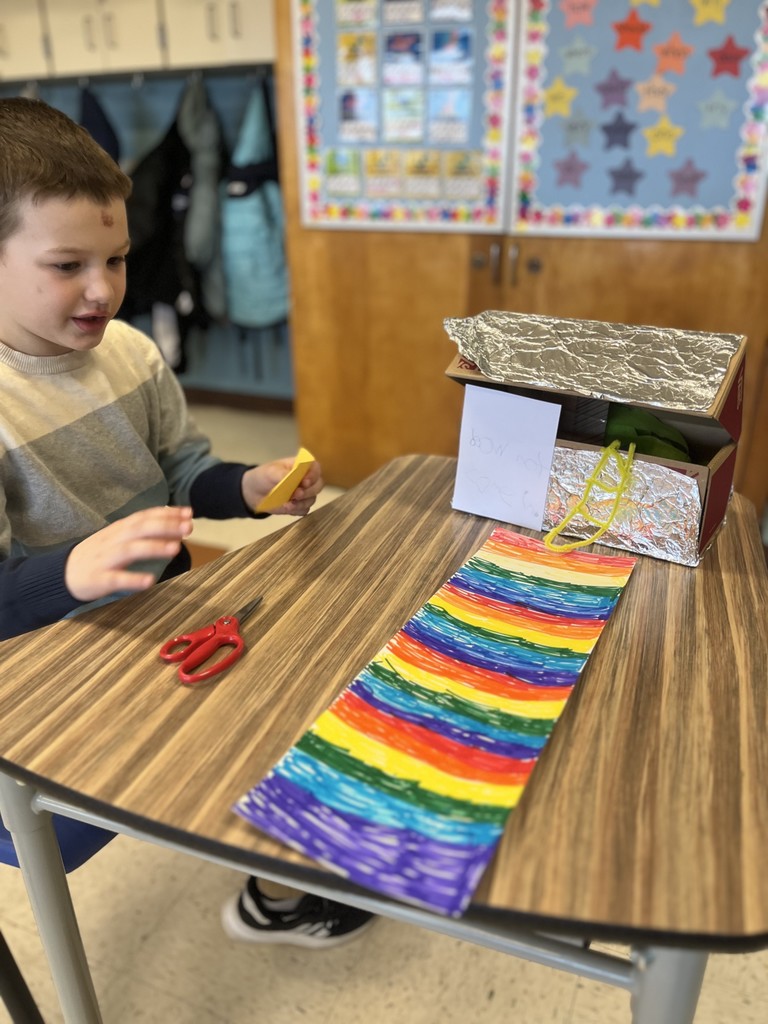
Cayla Tangney’s High School Art History II students have been learning about Impressionism and the way that the artists of the time used quick brushstrokes to capture the weather, season, and time of day as accurately as possible.
They were not taught how to paint the objects in front of them. Instead, students were only given a short amount of time to try and record the light and colors that they saw. They had to mix colors both on their palette directly onto their paper and, like the impressionists, they were not given any black.
Impressionists called painting outdoors "en plein air". Since students couldn't go outside in during the recent frosty cold and windy weather, they did the next best thing and utilized the windows. They stood in the hallway, looking out of the window and into the High School’s courtyard, so they could observe what they saw directly from life.
The following day, we did a gallery walk around the classroom to see which paintings were most successful in representing the style. Then, students had time to reflect on the experience of how it felt to paint this way as opposed to taking the more realistic or "perfect" approach that they were used to. Many realized how it was challenging to paint so quickly and how they were not accustomed to painting without considering realism.
•Impressionism is a style of painting that originated in France in the 19th century. It's characterized by subject matter, technique, visible brushstrokes, vivid colors and a focus on capturing the fleeting effects of light and color as well as composition, angles and movement.
•Impressionist artists included Claude Monet, Camille Pissarro, Alfred Sisley, and Edgar Degas.
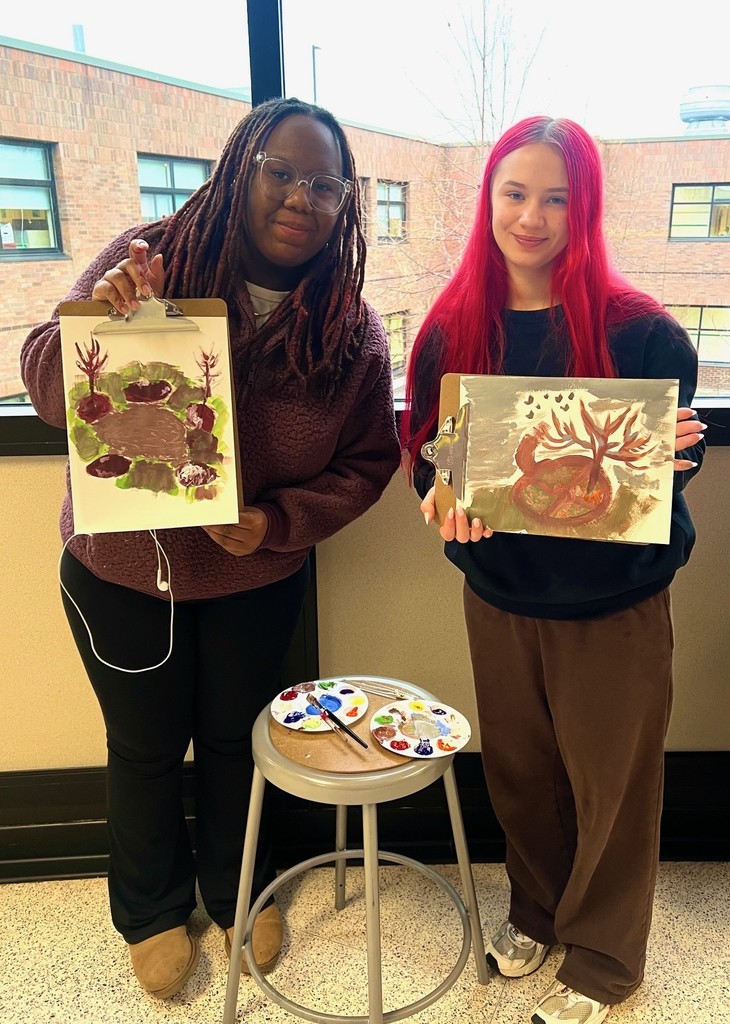
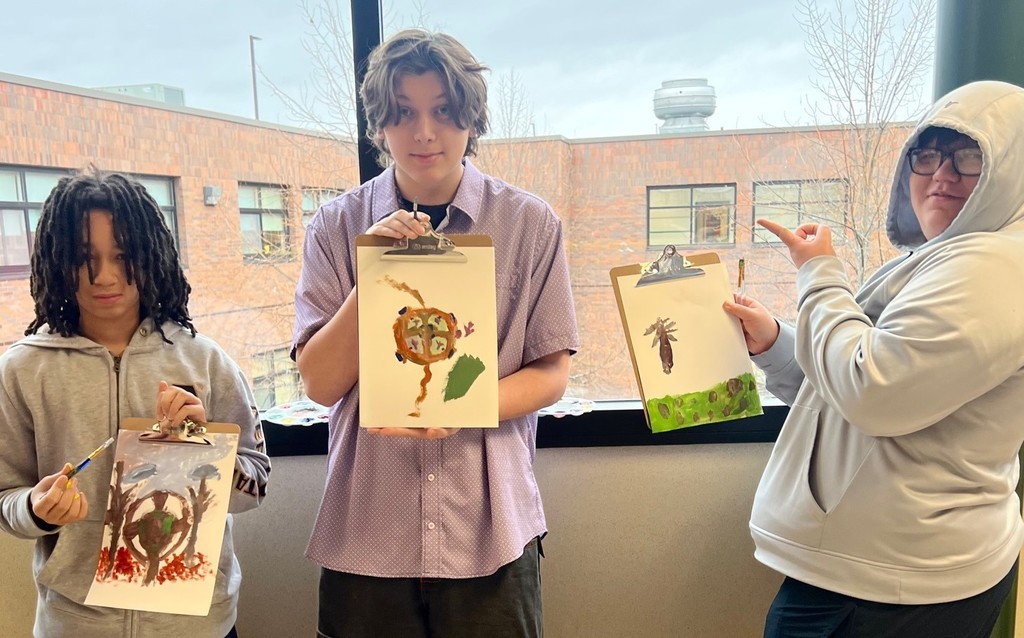

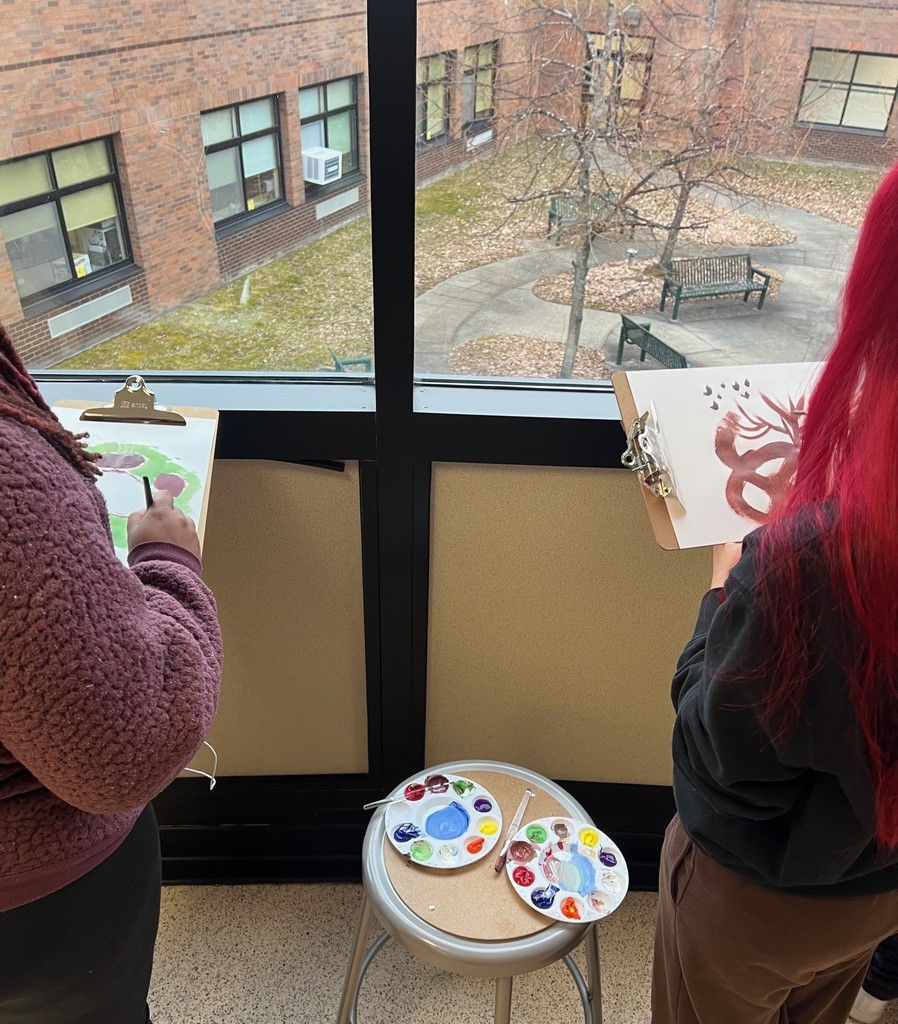
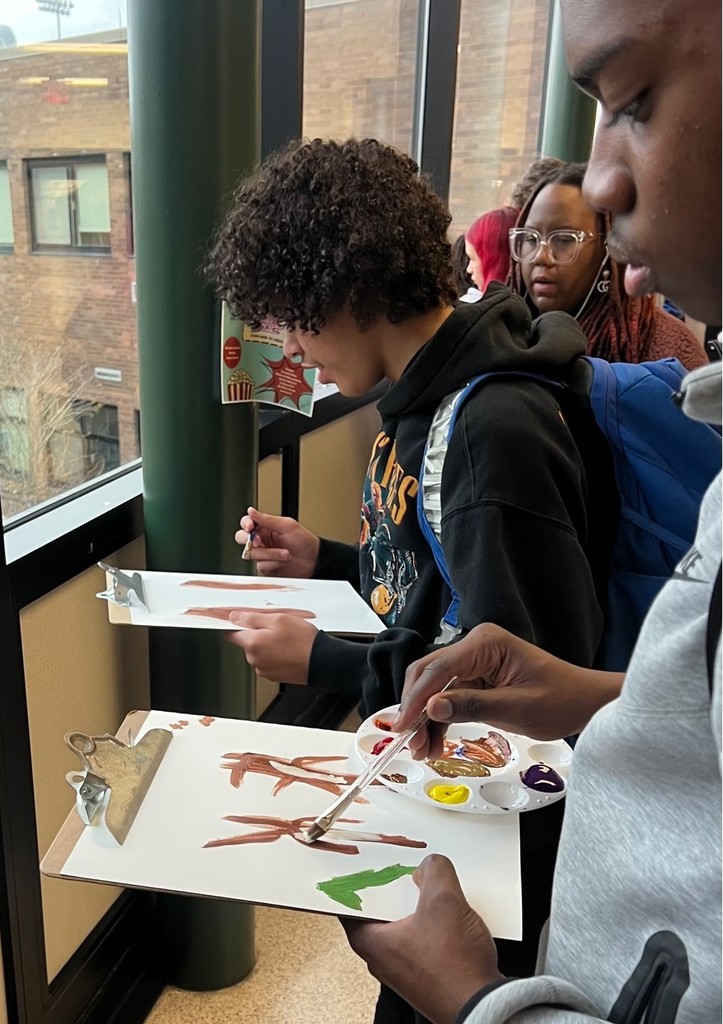
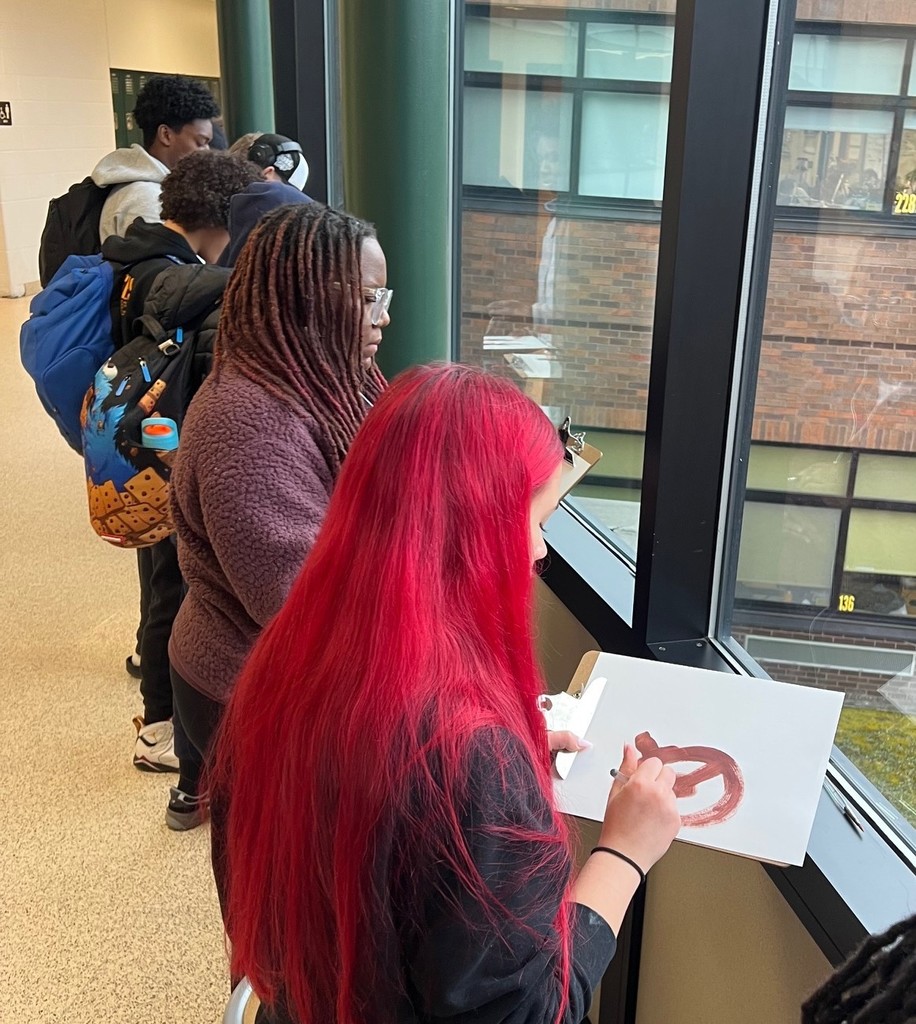
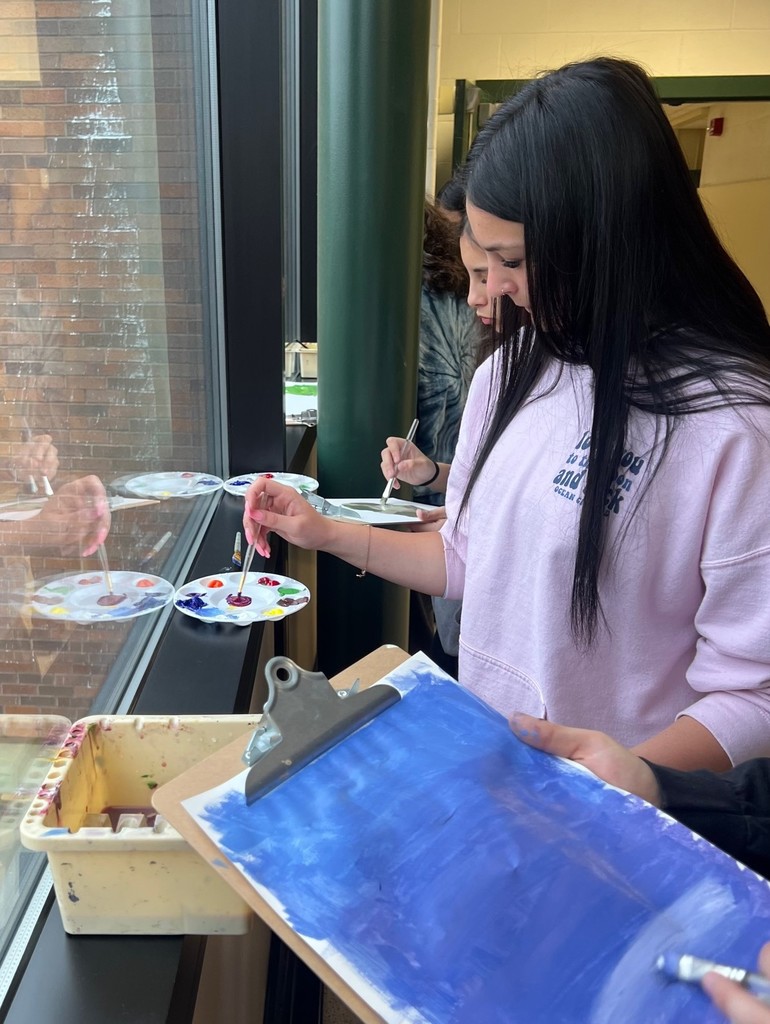
PI/π MATH ‘LAB!’
Kristine Kidney’s Middle School math students completed a special “math lab” on March 14, to mark Pi/π Day! It was a fun and different way to apply students' knowledge of the ratio of the circumference of a circle to its diameter!
Students measured various circular items and recorded their circumference and diameter. Then, they found the averages of these ratios, which should have equaled 3.14!
•Pi is the ratio of the circumference of a circle to its diameter. It's an irrational, which means it doesn't repeat.
•In 250 BCE, Archimedes of Syracuse created the first algorithm to calculate pi.
•He used the Pythagorean Theorem and the areas of polygons inscribed within a circle to more accurately show pi, which is between 3 1/7 and 3 10/71.
•In 1706, Welsh mathematician William Jones used the Greek letter “π” to represent pi.
•Swiss mathematician Leonhard Euler popularized the use of the symbol in 1737








Author and Minisink Valley parent Stephanie Lock visited the Elementary School on March 14 for a “Meet the Author” visit, sponsored by the ES PTO!
Mrs. Lock’s book, “If Goldfish were Bluebirds,” is a story about self-acceptance that follows five animal characters' thought processes in wishing they were like other animals. However, they ultimately come to realize that their own attributes are what makes them so special and unique. The story is a great reaffirmation to everyone that we all are unique and special!
Thank you to the ES PTO for arranging this very fun visit!






Today, March 14, is the All District Choral Festival, which was held at the High School! Fifth-grade, eighth-grade and high school choral students gathered to make music and share their choral experiences. Part of the day included rehearsing for their performance of "Connected," which will be performed on Tuesday, March 18 as part of the Music in our Schools Concert at the High School! Be sure to be there to see the results of their hard work! This large ensemble sounds magnificent! Thank you to everyone who played a role in today's event!





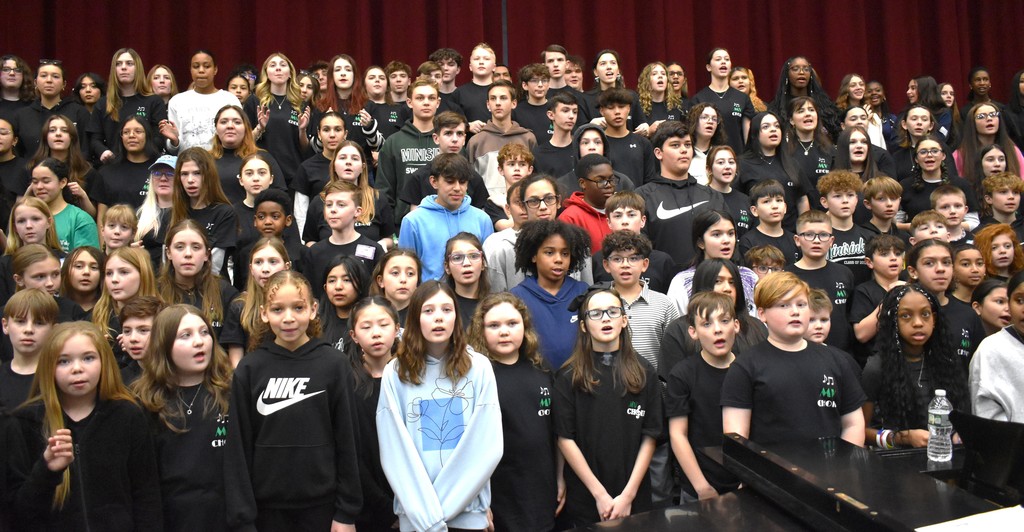



IT'S π DAY!
It's a big day for π fans, who love the number 3.14159, rounded to 3.14, and like to commemorate the day in different ways!
To mark today, Victoria Ingrassia's Middle School FACS students made peach, cherry, apple, sugar-free pumpkin and lemon meringue pies from scratch earlier this week, in preparation for today! Middle School faculty and staff were invited to stop by for a piece of their favorite π/pi/pie!
•The history of pi dates back thousands of years to the ancient civilizations of Egypt and Babylon. The Babylonians approximated pi to be around 3.125; while the Egyptians used a value of about 3.16045.
•The history of pie stretches back to ancient Egypt, with early versions being flat, crusty cakes filled with honey and grains, and evolving into both savory and sweet forms across various cultures.


“C-O-N-G-R-A-T-U-L-A-T-I-O-N-S” to eighth-grader Amaan Ali who earned second-place honors at the March 13 Orange-Ulster BOCES Regional Spelling Bee!
While Amaan does not advance to the next level of competition, he is always a true ‘W-I-N-N-E-R” in our eyes! #MINISINKProud
Amaan previously said he felt spelling was important because “it’s how we express ourselves as people” and advised future spellers was to focus on oneself when studying, adding: ”Do not hope for other people to make mistakes.”
Spelling bees are important because they foster a love for language, improve spelling and vocabulary, boost confidence, and enhance reading comprehension and memory, all while providing a fun and engaging learning experience.



The co-teach model offers unique instructional opportunities! Take a peek at Angela Dombal’s and Bridget Kelly’s ES kindergarteners busy at work with their Amplify ELA skills lessons! When the classroom’s timer goes off, the groups switch so they can practice both skills.
In this recent lesson, Mrs. Dombal used Amplify picture readers to introduce and teach the new tricky word “down” and later its opposite, “up.” "Down" is considered a tricky word because its pronunciation doesn't fully align with typical phonics rules, meaning a beginner reader might struggle to sound it out based solely on the letter sounds. The "ow" combination doesn't make its usual "ow" sound as in "cow" but instead produces a "doun" sound, making it an irregular spelling pattern that needs to be memorized as a whole.
At the same time, Mrs. Kelly reviewed new digraph sight words and then completed a chaining activity where students manipulated a sound or two within a word to create a new word. A digraph is two letters that work together to make one sound. For example, "ch" in "chin" and "ea" in "bread" are both digraphs.
•Tricky words for kindergarteners are words that don't follow the usual rules of spelling and pronunciation. They can also have unusual spellings or silent letters. Tricky words can be difficult for emergent readers because they haven't learned all the graphemes in the words. They can also be temporarily or permanently tricky. A "grapheme" in phonics is a letter or group of letters that represents a single sound (phoneme) in written language.
•A "chaining activity" in Kindergarten ELA refers to a phonics-based activity where students build a series of words by changing only one sound at a time, essentially creating a "chain" of related words, helping them practice decoding and encoding skills by focusing on letter-sound connections and identifying patterns in spelling while reinforcing phonemic awareness in young learners.








Girls Varsity Basketball Coach Jim Golden is proud to share that his team made a very inspiring run to the recent Class AA Final Four game as part of their season play!
"The team dominated in three must-win league games in the final weeks to qualify for the Section IX playoffs," he said. "Our players’ skill and toughness were on full display when they traveled to FDR and won a very physical game against a bigger team in front of a very intense FDR crowd. The girls were very impressive in their play and their composure."
Congratulations to the team on a remarkable season!

WHAT A GREAT, GREAT NIGHT!
So much fun and fundraising (the amount raised is still being tallied) at the March 12 Minisink Valley vs. Harlem Wizards game! THANK YOU to everyone who had a part in its success and to everyone who came out to be awesome spectators! There's four amazing photo galleries on the district's Facebook page for everyone to view: https://www.facebook.com/MinisinkValleyCSD
For the record...our team was super gracious and "allowed" the Wizards, our visiting guests, to win in a 63-46 final!

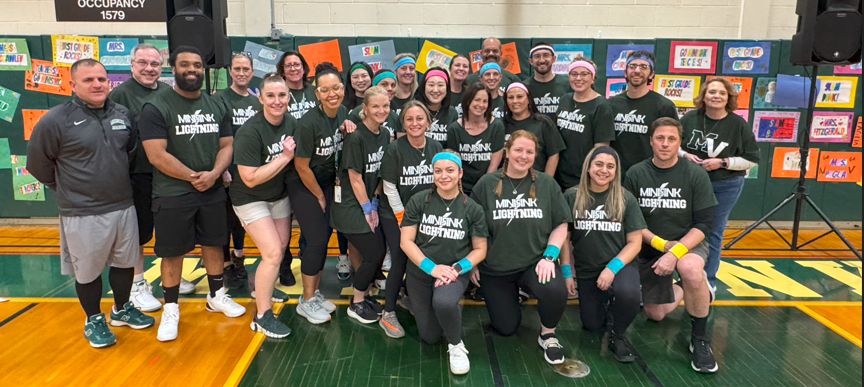






The sixth-grade teaching team recently led their students in an in-class apple mummification project, as part of their studies on Ancient Egypt!
Students studied the ancient process of embalming, which was a 40 to 70 day preservation process that included removing organs, soaking the body in natron, and wrapping it with linen. The ancient Egyptians did this because they believed the body would reunite with the soul in the afterlife.
Students soaked their apples in a mixture of salt and baking soda for one week to recreate the process. This mixture lifts the moisture out of the apple, leaving it to look like a mummy!
•Salt and baking soda are “desiccants,” or substances that remove water from materials they come in contact with. Covering an apple with these desiccants for a week removed all of the apples’ moisture, resulting in a shriveled, lighter, mummified apple.
•Mummifying, or embalming, something helps preserve it for weeks, months, or even thousands of years! The mummification process was practiced throughout Ancient Egyptian culture. It was thought to prepare the dead for a happy afterlife, so everyone—rich or poor—received some type of embalming after death.
•Egyptians used a special type of salt called natron, found along the banks of the Nile River, as their primary desiccant, which worked to preserve bodies for a very long time.
•Mummified bodies were then wrapped in linen and placed in a sarcophagus—a large stone coffin that was often lavishly decorated. Ancient Egyptians’ extensive use of the mummification process has allowed modern-day archaeologists to better understand their lives and culture.
•Archaeologists study the human past through material remains. They study the ancient past as well as the recent past. Archaeology helps us understand where people lived, how they survived, and how cultures have changed over time.
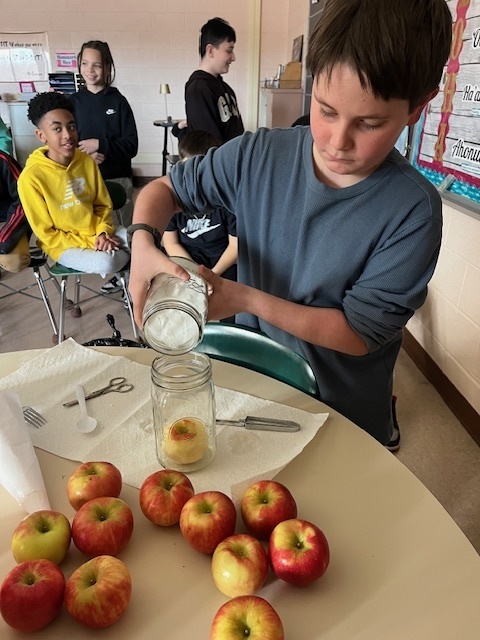






BADMINTON, ANYONE?
If you’re at the High School today --- the answer was YES!
Today, the High School’s annual (and competitive) Badminton Tournament, took place, where pairs competed in coed and boys divisions with the quest of winning and friendly bragging rights! Most of the school is involved, by either participating or as spectators, and the mission of being victorious is fierce and friendly!
Presenting the winners of the High School’s 2025 Badminton Tournament! And, congratulations to all participating pairs! See more photos on the district's Facebook page: https://www.facebook.com/MinisinkValleyCSD
COED DIVISION
First-place: Cayleigh Kuiken and Kate O’Neill
Second- place: Chloe Beck and Stetson Terpak
Third-place: Jaida Macaluso and Dylan Filip
Fourth-place: Kiera Filip and Sophia Escobar
BOYS DIVISION
First-place: Anthony Tresch and Jandro Arias
Second-place: PJ Duke and Ethan Rodriguez
Third-place: Aaron Kelter and Chris Rickard
Fourth-place: Dylan Peets and Dylan Vidal
As is tradition, the badminton duos often dress in special, unique attire to make the day even more fun!
Badminton, a fast-paced racket sport, is believed to have originated in India, evolved from the game "Poona" or "Poonah", and gained popularity among British expatriates in the 1870s. The sport is also known as "battledore and shuttlecock" and is the second most popular participation sport in the world after football.










REMINDER: HAVE YOU SIGNED UP?
OPEN TO ALL AGES....DON'T MISS OUT, there's limited seating and a similar program held last fall SOLD OUT!
The High School Art Club is hosting a Spring fundraiser called “Printing” on Tuesday, March 25 at 4:30 p.m. in Room 217 at the high school.
In this workshop, participants will learn the art of printmaking on fabric. They will create stamps and use ink as a medium to make beautiful, handmade, wearable pr hangable art.
Participants will be guided by a talented Minisink Valley Art Club student to create one-of-a-kind artwork.
Reservations are required by scanning the QR code on the flyer below. Refreshments and snacks are included in the admission price:
Adults: $12
Children/students: $10
Siblings discount: $5 per additional sibling
Cash only, payable at the door.
All proceeds will go toward art scholarships, museum field trips for art students, additional supplies for our art club studio, and other events.



